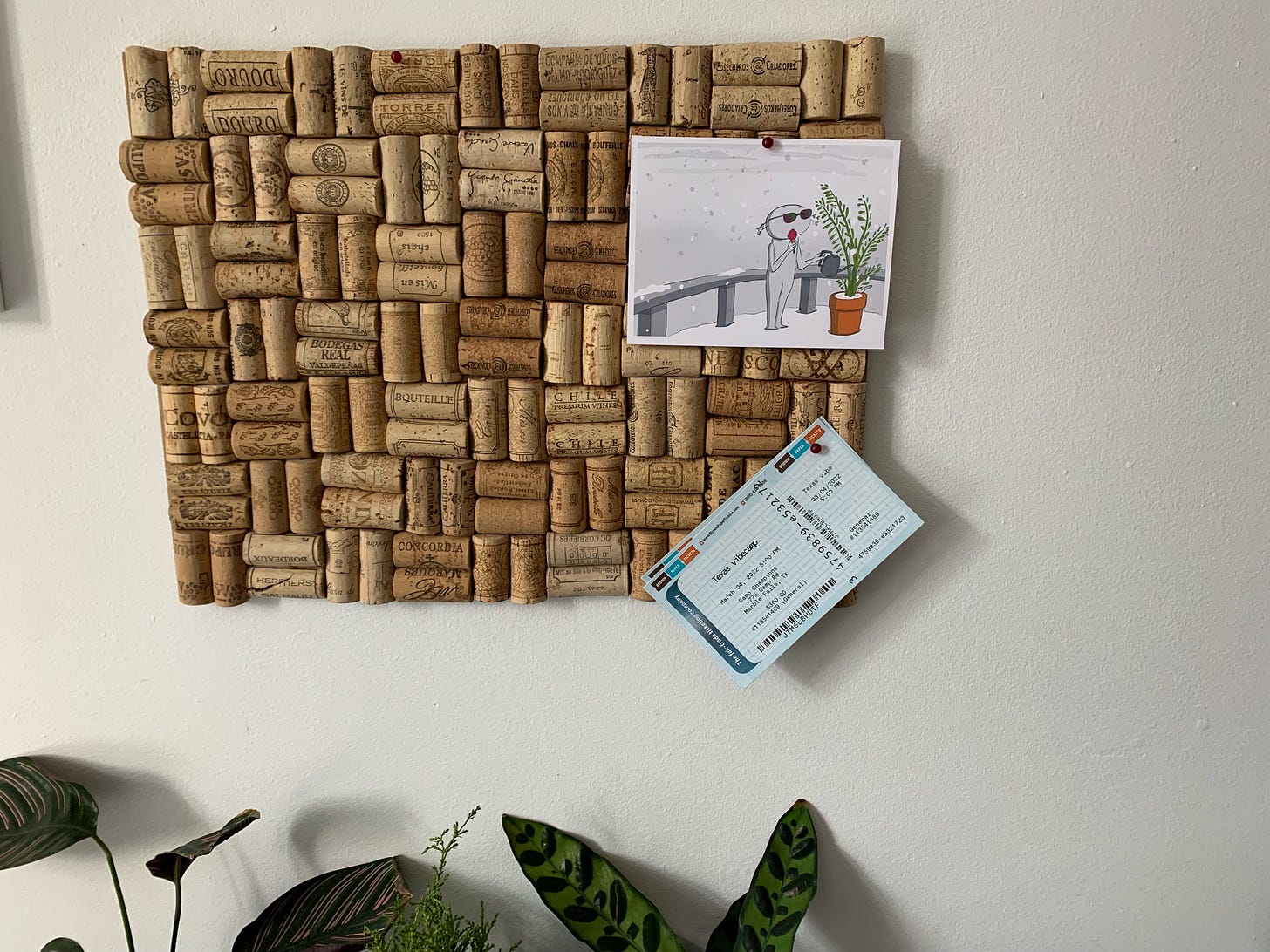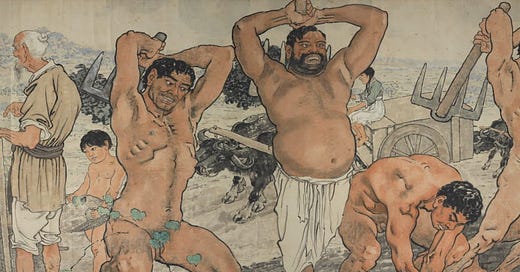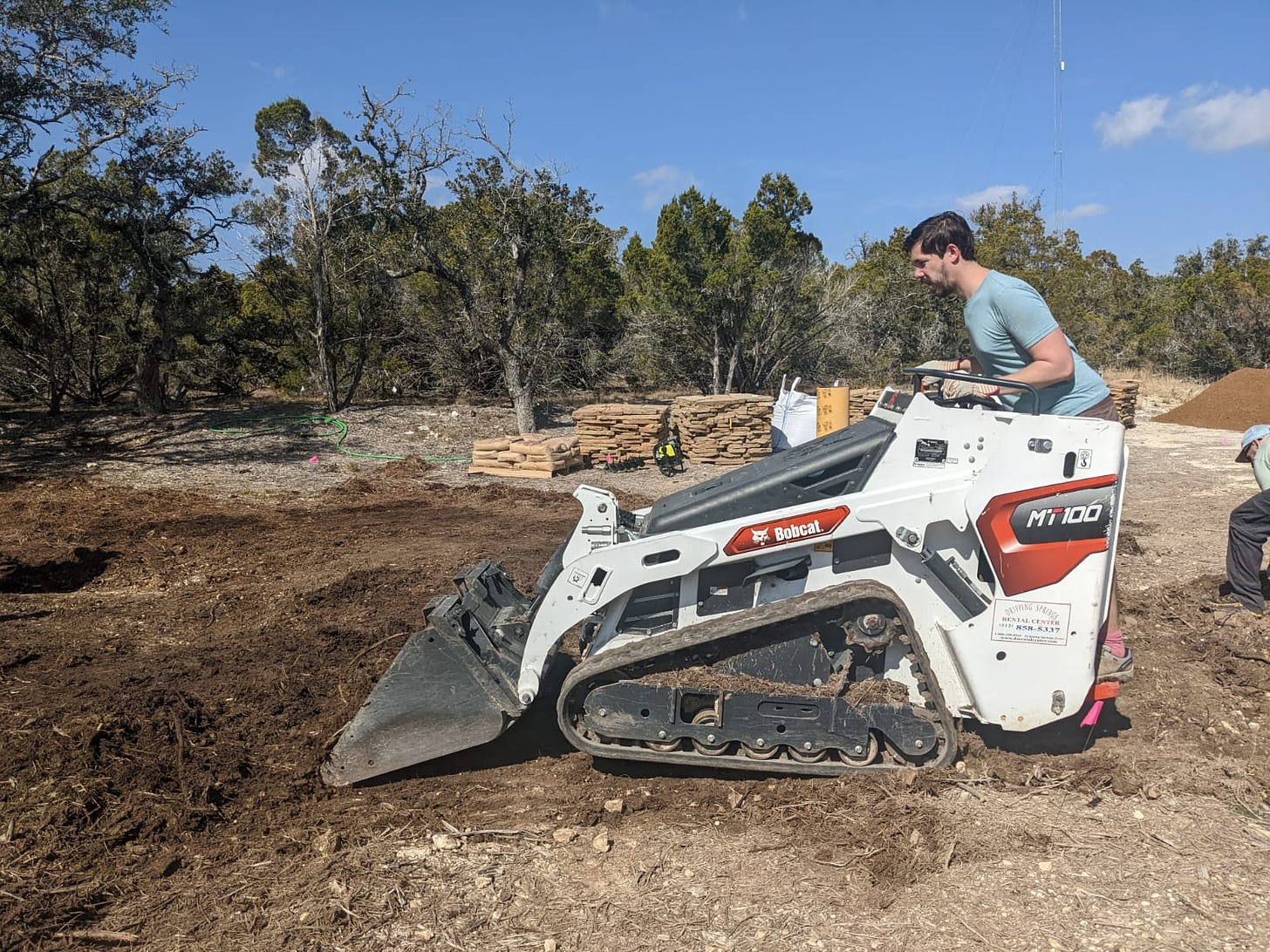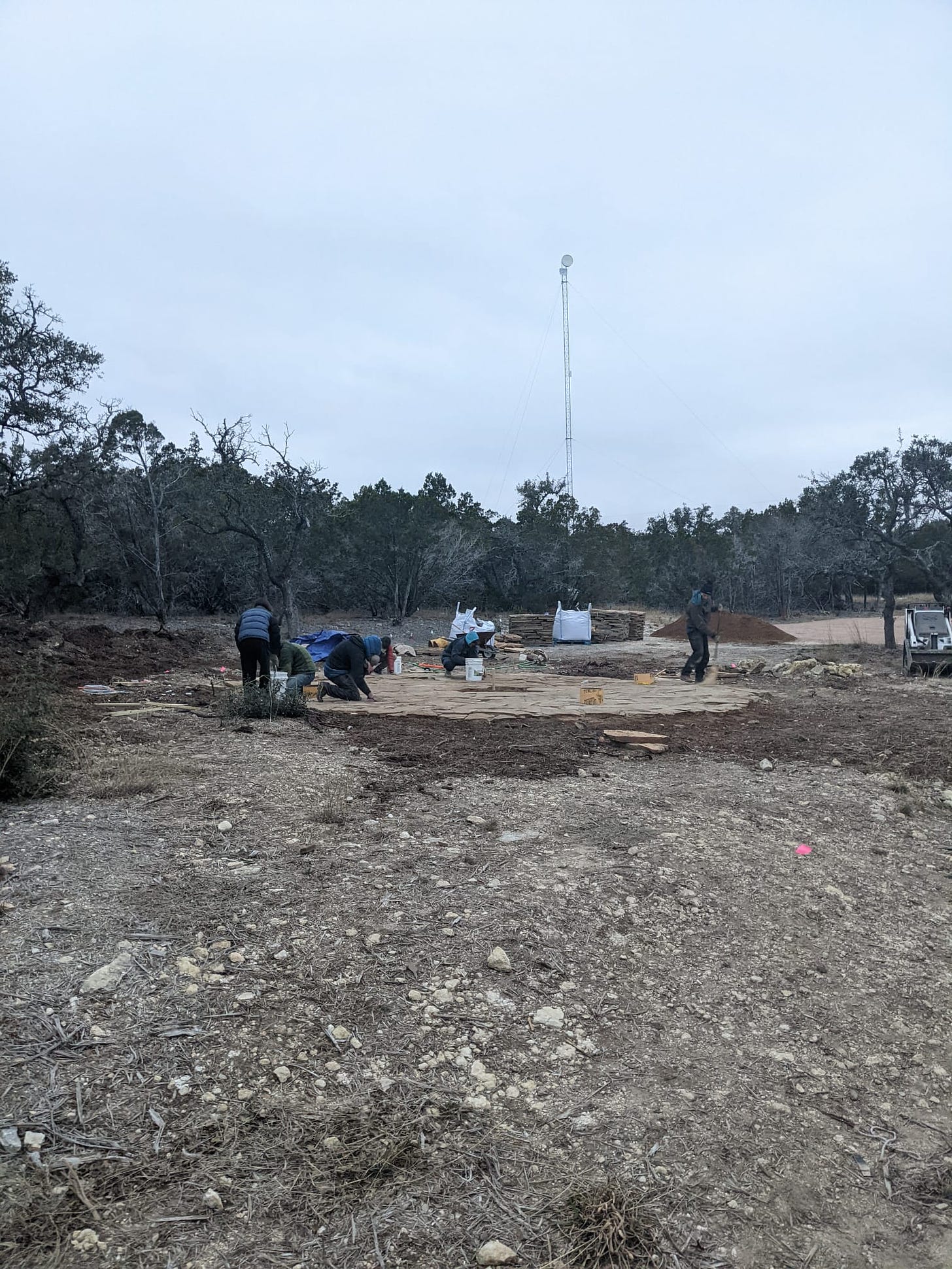Five years ago, I made this:

For years my parents had kept the corks of the wine bottles they drank. They ended up in a plastic bag that stayed in multiple people’s closets until I decided to make something out of it. I bought a thick cardboard sheet. I borrowed a hot glue gun. Then I cut all these corks in halves and glued them to the sheet to make this notice board. In the process I only cut myself twice! (And glued my fingers together a bunch of times besides.)
After I was done I realized this was maybe the first time in my adult life that I had made a thing. By which I mean a physical thing, made of atoms rather than bits.1
That did not mark the start of a blooming hobby in making things.
I have always considered myself very much not suited to manual labor. I was always an “intellectual.” As a kid I once fantasized about not even having a physical body. I wished that the science fiction scenarios in which humans become incorporeal patterns of energy were true.
I don’t want that anymore. In fact I cringe about that wish, as I cringe at the thought of an elaborate metaverse where people would spend more time than in “real” life. I am happy to have a physical body and I think we should strive to make physical existence as satisfying as possible without giving up in favor of virtuality.
But I do spend most of my time in the world of bits. I am good at a few atom things, like cooking, but not very much at building. I walk around in any place with human presence and I marvel at the thought that everything around me has been built. It’s all so foreign to me.
In an attempt to make this less foreign I have joined a week-long build activity at Cabin, the place in Texas where I spent a month last year. Under the direction of a guy who knows what he’s doing, Charlie Frise, we are building a patio and a pergola. We began yesterday by moving dirt around.
I had a lot of fun driving this Bobcat skidsteer machine, something I had never done at any point in my life. There are controls for moving around with the caterpillar tracks, and some others for raising the arms and independently raising the bucket attachment. It felt, I thought, like a video game.
And immediately that thought felt wrong. It is not driving heavy machinery to move real atoms around that should feel like a video game; it is video games that should feel like doing real stuff.
It might be inevitable that societies virtualize as their capacity to do so increases, thanks to technological development; and as fewer resources (like space and housing) become available to a growing population. Besides, manipulating bits does tend to be more powerful (and therefore more prestigious) than manipulating atoms. Manual labor is always at the bottom at the hierarchy. I don’t know if that’s good or bad, but it doesn’t seem like it’s going to change anytime soon.
In any case, I’ll generally keep dealing with bits. I’ll keep cooking, so I can actually have a part of my life in which I get the satisfaction of making physical stuff, but crafts projects and construction work will most likely remain rare occurrences.
However, it’s good that those rare occurrence actually occur. It’s good to be with friends this week to build a patio and a pergola. It’s good to move dirt around.
Of course, all things are made of both atoms and bits. The purest information still needs to be stored in physical neurons, DNA molecules, or chips of silicon. The purest physical objects still need to be organized according to some information pattern. But in practice, things like music, literature, ideas, and computer code are closer to the “bit” end of the spectrum, while manufactured objects, crafts, and construction are closer to the “atom” end.







